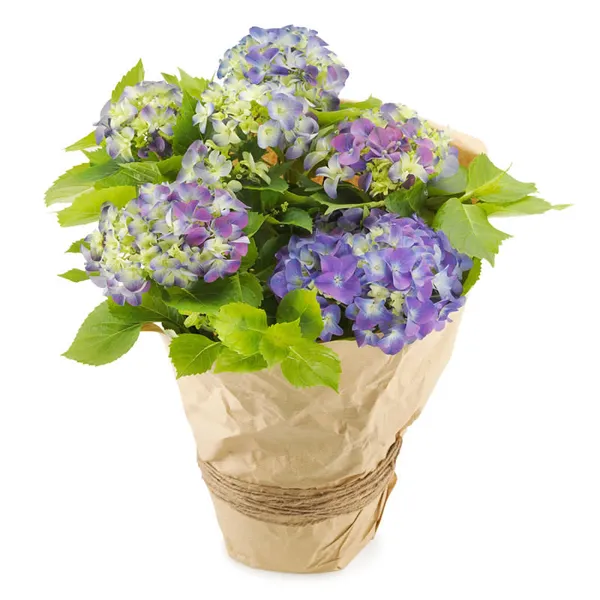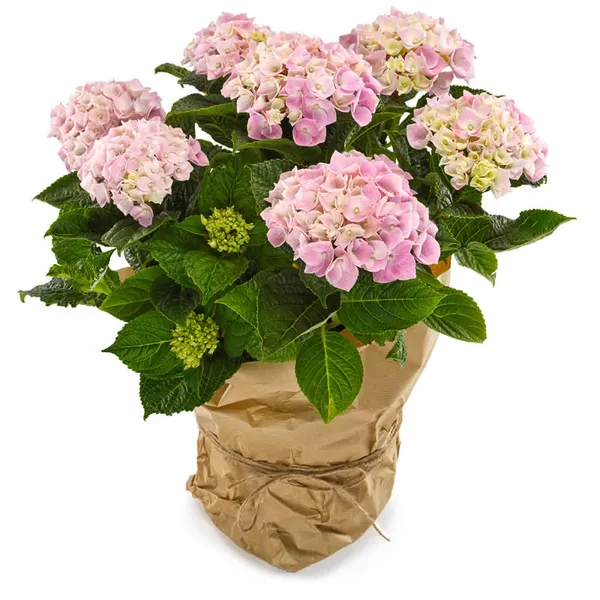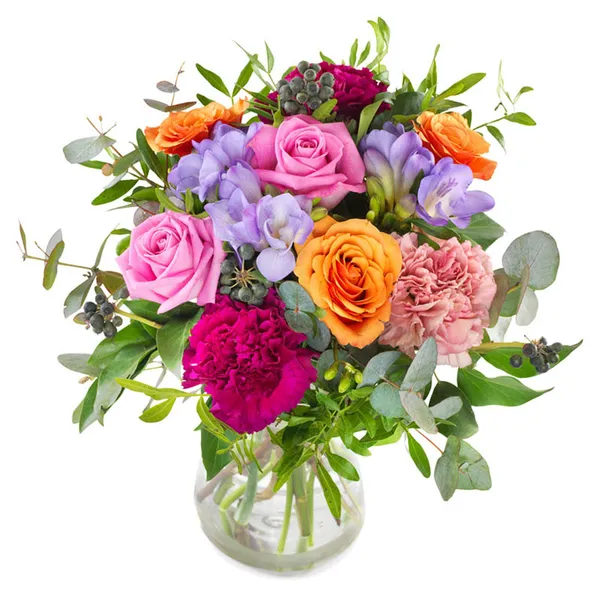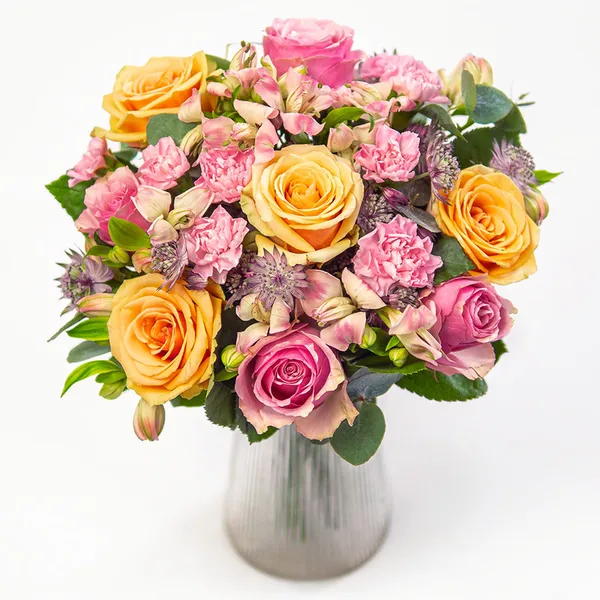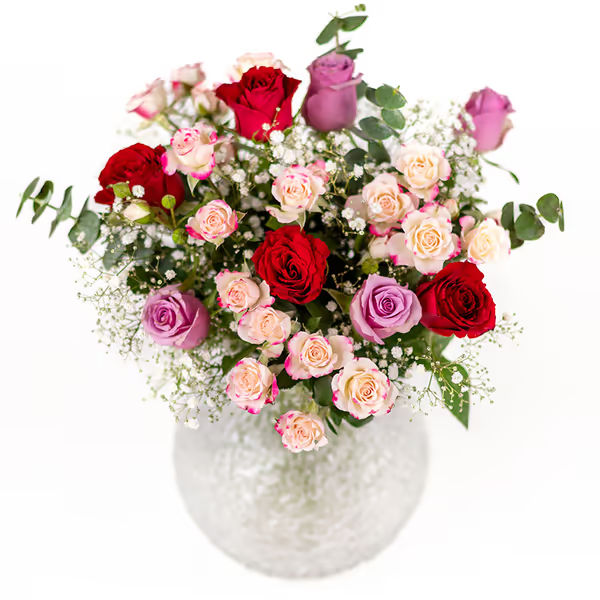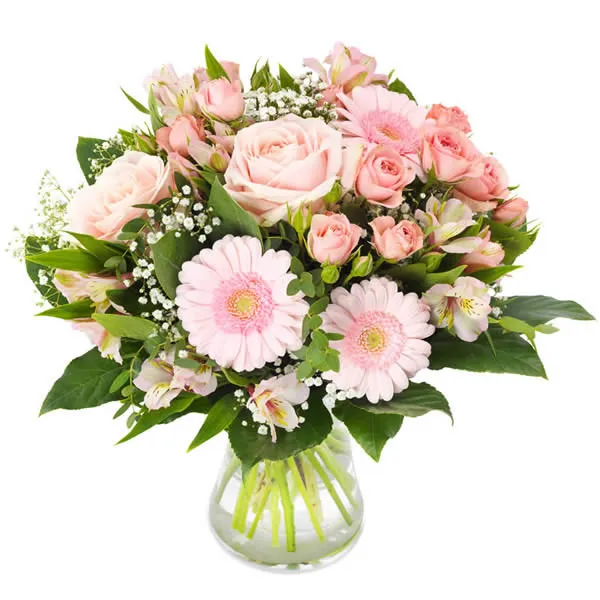Hydrangea in a Pot – Facts & Care Tips
The hydrangea is one of our most magnificent autumn flowers. It looks just as good in the outdoor flowerbed as in an indoor pot. Here, we provide plenty of tips on how to help your hydrangea thrive.
Hydrangea in Pots Outdoors
Taking care of hydrangeas in pots requires some attention, but with the right care, these beautiful flowers can flourish. Here are eight tips to keep your hydrangea in top condition:
- Choose the Right Pot Hydrangeas have extensive root systems, so choose a pot that is large enough and has good drainage. A pot with drainage holes is essential to prevent the roots from standing in water, which can cause root rot.
- Placement and Light Hydrangeas thrive best in partial shade. Place them where they get morning or afternoon sun, but avoid the strongest midday sun, as this can scorch the leaves and flowers.
- Watering Hydrangeas are thirsty plants. The soil should be kept evenly moist, but not waterlogged. On hot days, you may need to water daily. However, avoid letting the soil become waterlogged.
- Soil and Nutrition Use well-drained, nutrient-rich soil. A soil specially formulated for acid-loving plants works well, as hydrangeas prefer slightly acidic soil. Fertilize with a liquid fertilizer for flowering plants during spring and summer, about once a month.
- Protect from Cold Hydrangeas in pots are more sensitive to cold than those planted in the ground. In winter, it's important to protect them from frost. The best way to do this is by moving the pot to a sheltered location. You can also cover it with a protective fabric.
- Pruning Prune hydrangeas sparingly. Most hydrangeas bloom on the previous year's growth, so avoid heavy pruning in spring. Only remove dead or damaged branches.
- Pest Control Hydrangeas can be affected by aphids, spider mites, and other pests. Keep an eye on the leaves and treat with soapy water or pest control products as needed.
- Determine the Color of Your Hydrangea Some hydrangeas can change color depending on the soil's pH. For blue flowers, add aluminum sulfate to the soil. For pink flowers, ensure the soil is more alkaline.
With these tips, you'll have a hydrangea that blooms beautifully and thrives in its pot!
Hydrangea in a Pot Indoors – How to Care for It
When you have hydrangeas indoors, it's important to place them in a bright room, but avoid direct sunlight that can scorch the leaves. Keep the soil evenly moist. Make sure the pot has good drainage to prevent root rot. Hydrangeas do best in cool rooms, around 15-20°C, so avoid placing them near heat sources. Remember to fertilize them every two weeks during the flowering season to promote strong growth. Finally, maintain high humidity by misting the leaves with water occasionally, as dry indoor air can damage the plant.
Hydrangea as a cut flower
The hydrangea, with its large, globe-shaped flower clusters, is one of our most magnificent cut flowers. It is equally beautiful alone in a tall vase or in a bouquet with other flowers. Read more here.
How to prune your potted Hydrangea
When pruning hydrangeas in pots, do it after flowering, usually in late summer or early autumn. Remove dead, damaged, or weak branches to make way for healthy growth, but avoid cutting too much since many hydrangeas bloom on the previous year's shoots. If your hydrangea is a variety that blooms on new shoots, you can prune more heavily in spring. Always cut just above a bud or leaf pair to encourage bushy growth.
Other flowers that look just as good in a vase as in a pot
Amaryllis, Dahlia, and Chrysanthemum are other flowers that looks just as beautiful in a pot as in a vase.
